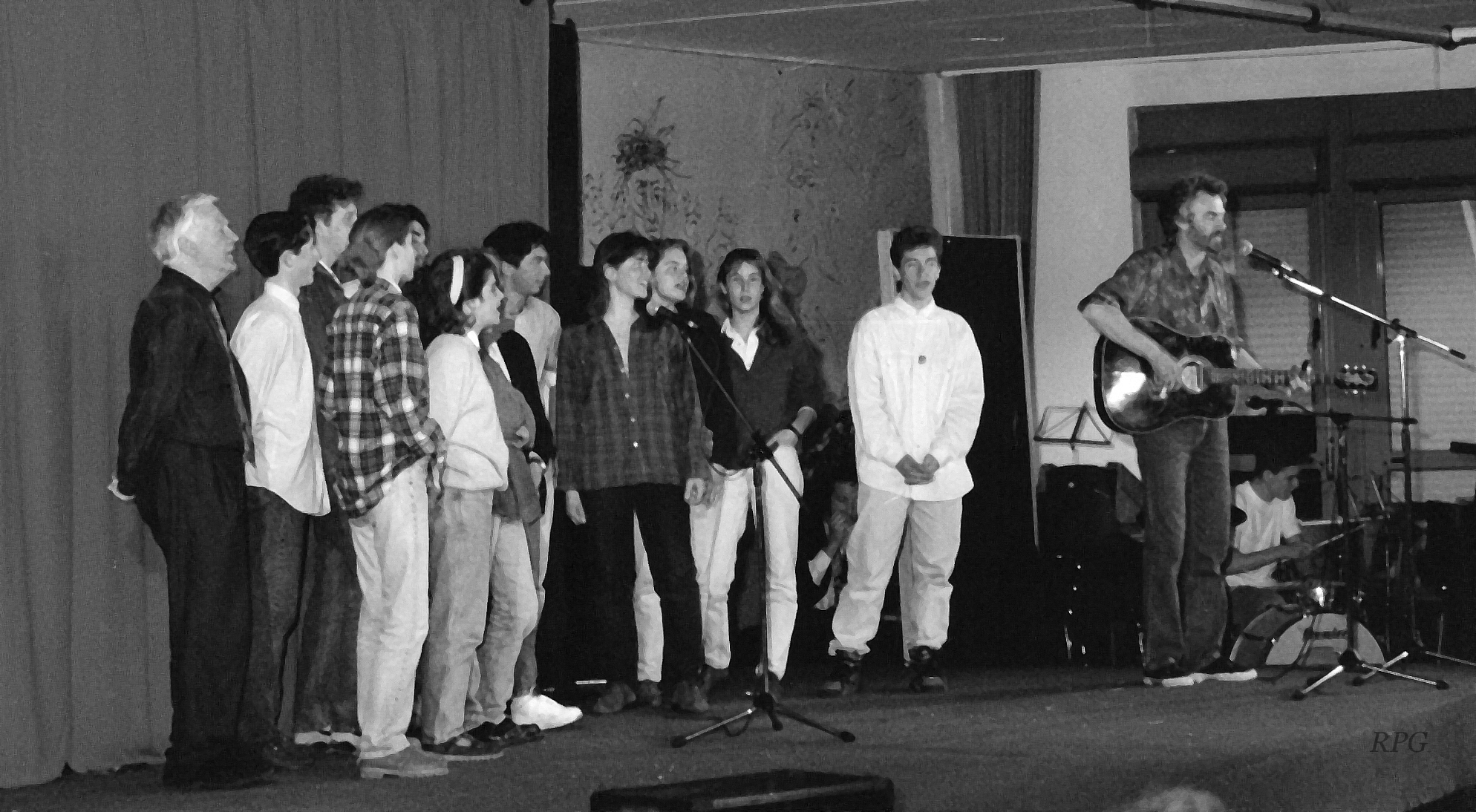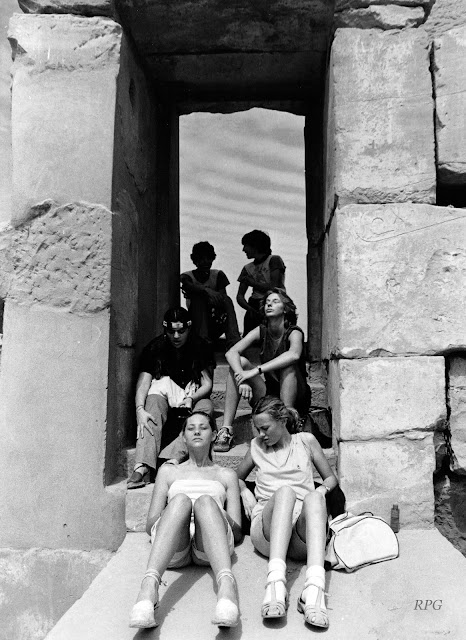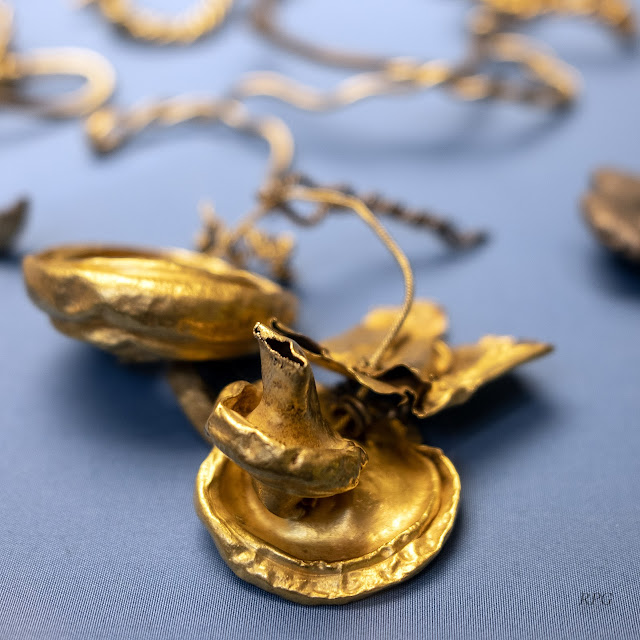In Memoriam.... the good days
 |
| My Upper Fourth Registration Group..... |
Yesterday, by happenstance, I met an acquaintance from way back - someone who had worked with my father, maybe 45 years ago, but who had once given me some excellent advice. And he spends some of each year with his partner in Tenerife, where, small world that it is, his social circle included a certain Tom Jackson and his (second) wife. Sadly, after some years of dementia (and some might unkindly say it was many years) Tom died recently, and this news brought my first meeting with him sharply back to my mind.
We met in the Waldorf Hotel in the Aldwych, then known as the Waldorf Astoria, after 1st Viscount Astor (who established it) but now humbly titled the Waldorf Hilton.....
I was there for an interview with the new Headmaster of St George's English School in Rome (aka Tom B Jackson), which had not long before moved to the ex-Jesuit Seminary at La Storta, on the Via Cassia, just out of Rome, the site, in fact (?sic), where in 1537 Ignatius of Loyola received a vision of God the Father and Christ holding the cross.....
As a result of this interview, in August of 1976, I boarded a train, with my trunk as passenger luggage in advance (as one did in those days) and set out for a new life in Italy.
 |
The seminary building that became St George's |
Unfortunately, I don't have any pictures of Tom Jackson, and in fact I didn't even have a camera for the first year or so of my stay in Rome, but I have raided my archives and selected a few pictures that, despite some dust and scratches, may bring to life those fabulous early years as a member of the St George's community.....
 |
We happy few..... |
I will try and keep it brief..... Someday perhaps someone will write a book about it, but for now I'll stick to the highlights.
First off, we have to acknowledge that St George's was a private educational establishment, offering an English education in the heart of Italy. It was both a business, and had to survive on fee income and nothing else, and it was governed by a board (including people from the British Embassy and Council) that inevitably had an interest in its standing as something of a cultural flagship. I won't say there was interference from above, but to paraphrase John Donne, No school is an island..... and external influences played a part in St George's in more ways than one.
[In several ways, perhaps? ndr]
 |
| Isobel Scott and Hilary Sides |
But, hey, I was 25 and not yet interested in all that. I was excited to be in Italy, and had an awful lot to learn. The staff, many of whom became life-long friends, were an eclectic mix of individuals, some of whom had historical links with Rome (for example, Charles Forgione, Welsh/Italian blood, Latin teacher, erstwhile British Military Intelligence officer in Rome after the liberation, detailed - so we were told - to drive Mrs Mussolini where're she would....) and others who, like me, had pitched up because of a mix of not having yet found a niche and still having a sense of adventure..... perhaps....?
 |
| Dr Nick Henson |
But the real life blood of the school coursed through the pupils. Over 800 boys and girls, from over 60 different nations. Some native Italians, others who, owing to parental occupations, had lived in many different parts of the world before spending a few years in Rome.
 |
| Jane Williams and Richard Edwards |
And there really were all sorts (although, despite the fact that some of the children were sponsored, most families had to be quite well off). This was a very far cry from my teaching experience on the outskirts of Manchester, but, as Eccles once said, Everybody gotta be somewhere.....
 |
| On our way to Barcelona (or back from there) |
Parents' evenings could be red carpet events. Stars of film and theatre, and music, such as Vittorio Gassman, Gigi Proietti, Aldo Giuffrè, Ursula Andress, Lucio Battisti, Michele Placido, Francesco Rosi and more. Politicians (Valerio Zanone for one, Eduard Shevardnadze, as a grandfather, for another); authors (Anthony Burgess before my time, Richard Mason and Robert Katz, during my time); journalists (such as Corrado Augias); academics, scientists, economists and friends of the pope - the list could go on (and apologies to anyone who feels left out!)
But all of these melded into a confusion of aspiring souls who laughed and played together and, occasionally, paid attention to teachers. There was an idiolect at the school, part Italian and part English, which made it easier for newcomers to blend in. My own daughters attended the primary school (later, ndr) with the step children of then Lazio superstar, Gazza, and, though none of them had secure Italian, they were all at one with each other.
One of the features of the school then, impossible today methinks, was what we called "March Week," when the school closed down and teachers arranged trips or activities (some of them in school) for self-selected groups of pupils. This was probably driven by the Italian tradition of having ski trips (not unknown in English schools, though these might more often be in 'holiday' time?)
My first of these involved taking a small party of teenagers, on my own, to stay in a villa on Capri. I think it went quite well, though one of my recollections is that I had to share a room with a girl because otherwise she would have been sharing a room with her boyfriend.....
Later trips were to Barcelona:
The Aeolian Islands, where my pupils had to rescue me from an altercation with un uomo d'honore who I had caught prowling through our rooms:
and which involved a reenactment of a scene from Pasolini's Theorem (with Terence Stamp) where - if I remember correctly - a character runs naked through the sulphurous steaming fumaroles on the rim of Vulcano:
Maybe I misremember that, but on another occasion we went to Cairo and Luxor, where we found that the Franciscan Convent we had arranged to stay in would not accommodate females, so we had to rapidly find an alternative. The girls were happy enough, I believe, though the flock of sheep and goats on the roof above their rooms displayed some bleating confusion.
We explored the remains of the Great Hypostyle Hall of Karnak and then, inspired by my friend and colleague Michael Hill, crossed the Nile and hired bicycles to ride to the Valley of the Kings. It was 40 C in the shade and all might have been well had all the kids been adept at riding bikes. Unfortunately, it turned out that one young lady could not. Alas, it fell to me to transport this elegant but unfinished youth to the tomb of Tutankhamen on my cross bar..... In fact, despite the sweat, I nearly did well out of it as a local farmer offered me two camels for my burden.
I hope I made the right decision.....
Nearer home there were hill walking expeditions - notably one to the summit of Monte Amiata in Tuscany:
But there were also theatrical performances, such as my production of The Playboy of the Western World, which ran for two nights, the second being twenty minutes shorter than the first as the cast skipped an entire scene and my friend, Bob Brecknell, as prompt, seemed to have been asleep at the time.
The audience expressed gratitude, though I am still not sure exactly what they were grateful for....
Much more successful were the shows directed by my head of department, Mark Menhinick, with whom we took over the Goldoni Theatre in the back streets of Rome, and which had initially opened when Shakespeare was active. A production of The Gondoliers was a treat:
Incidentally, this later led to me persuading Patrick Persichetti and his mother to let me and my friend Gino run a series of folk concerts there. Patrick, whose father was a hero of the defence of Rome, also wanted part of the action, so insisted on staging his own one-man show.... that ran for one night, with my wife-to-be, Amanda, and her friend, Hilary, as the only two in the audience.....
(The Goldoni subsequently became a music bar under the name of the Old Goldoni, but then was reclaimed by the Vatican and has since been closed to the public for decades......)
We also had concerts at the school, including some that we organised to support Amnesty International. Roger McGough was one of my guest artists, as was Adrian Henri, and here is a shot of the late great Adrian Mitchell joining in the chorus of Bob Dylan's I Shall Be Released.....
 |
The Folk Club in action |
That was a great show, with Rob Hix directing the school choir and orchestra:
 |
| Rob Hix conducting, Martin Biggs on strings |
And the Coro Ana (the choir of the famous Italian Alpine Regiment - with which both Mark Menhinick and Gerry Firth sang).....
All presided over by the then Headmaster, Frank Ruggiero, who, having heard Adrian Mitchell reciting his verses for the pupils in the morning, advised me that some of Adrian's poetry might be a little too left-wing for the evening performance and that he (Frank) would rather some pieces were cut.....
Needless to say, when I related this attempt at censorship to Adrian, it merely fuelled his performance. [RIP Adrian].
Another Principle (I think I worked under six, or maybe it was seven?) who liked to air his own views, however unpopular, was Hendrik (Harry) Deelman. Hendrik had come to us from a post in Buenos Aires, which conflicted somewhat when Argentina declared war on the Falkland Islands. Despite the complications (we had to abandon school uniform to avoid pupils being identified as attending an English establishment on their way to and from school, and staff were advised to check under their cars every day for bombs.....) one thing was clear. On the map of the world behind his desk in his office, Hendrik had scored out Falkland Islands and clearly written Las Malvinas......
Harry was teetotal. Not an attribute everyone understood. He had a partiality for raspberry cordial and Coca Cola. It was indicative of the spirit of our Parent Teacher Association when I overheard Audris telling him in her distinctly South African accent not to drink so much Coca Cola. Her exact words were: Harry! it makes your arse sag!
What fun!
 |
Kindred Souls - Hendrik and Gerry Firth on a Sponsored Walk |
And there were parties, and discoes and lunches, and dinners. I really don't know how we got any teaching done.
And as for learning? Well, that was up to the kids..... (as it always is, ndr)
Fancy dress was a regular feature -
Or was it? Maybe these were every day occurrences? (Or was it my imagination?)
I won't identify anyone in these pictures here, but I am still in contact with many of them, and I am very proud to have known them. A number have become well known - does the name Frans Timmermans not fill you with admiration and awe? Would you relax in an interview with Nathalie Tocci? Wouldn't you love to study English Literature at the University of Cassino and Southern Lazio? Can you ignore the writings of Reshma Ruia? Do you not wonder at the quick and confident production of Radio 4's Loose Ends?
Ah, we had such times!
And (most of) the staff were a laugh too..... I do remember one woman scowling when I offered her a glass of Prosecco at break time on my birthday once, and there was a maths teacher who became known by his catchphrase: There's nowhere to hang yer jacket.... But others knew how to party:
I remember driving my 750 cc Triumph Trident out to Trevignano one night in the dark and discovering that I had maths teacher Sandy Oldham (above) on the back seat. In pitch dark we went skinny dipping in Lake Bracciano and I can distinctly remember an extraordinary sensation of weightless directionless in the water - I neither knew which way was up nor down (though, I must add, that had nothing to do with Sandy....)
But she did have an infectious laugh.....
So..... Although this has been a superficial and very personal piece, sparked by the sad remembrance of the late TBJ, for those with the resources, some of these pictures may once have appeared in the annual school magazine, The Georgian, which I had something to do with for a few years, and there are many more therein.....
 |
The Editorial Team |
Those were the days....
And these were some of those who joined in:
In Memoriam Tom Jackson, Janey Alcock, Pat Antonini, Charles Forgione, Mike Wall, Martyn Hales, Geraldine Braithwaite, Barrie Spicer, Rob Hix, Gerry Phillips, Helen Conlon, Rita Venturini, Harry Fairtlough, and all those colleagues, pupils, friends and acquaintances who have gone before......
Thank you for the good times.....










































